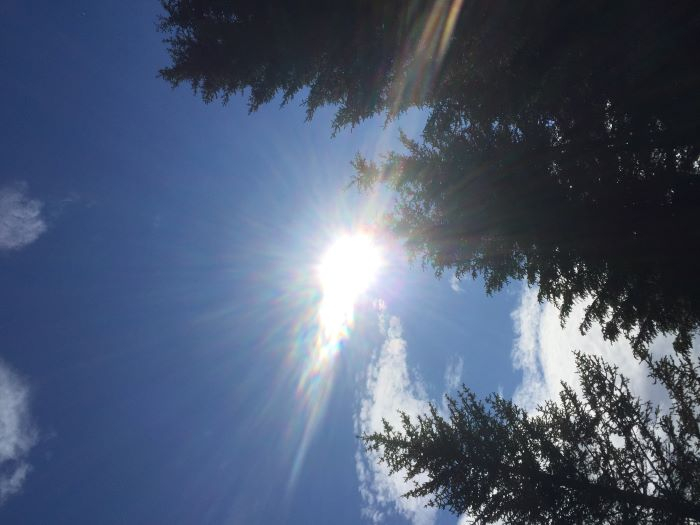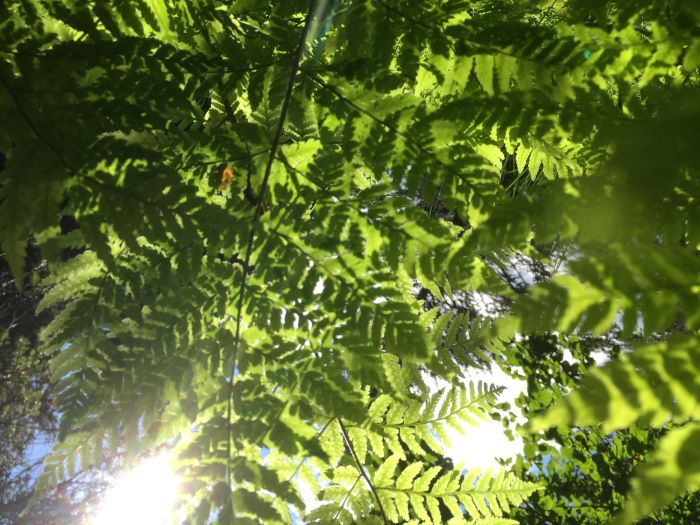As I write this, it is the June Solstice. The exact moment of solstice occurred a few hours ago, at 21:44 Universal Daylight Time. This was at 1:44 pm today here in Homer, Alaska. This moment marked when Earth’s north pole leaned most toward the sun, and the Earth’s south pole was tilted most away from the sun.
On this day, the sun appears directly overhead at local noon for those living at 23.5 degrees north (the Tropic of Cancer), as far north as the sun ever gets. And during the December solstice, the sun appears directly overhead for those living at 23.5 degrees south (the Tropic of Capricorn).
(In case you need a refresher, here’s the basic science from Earth & Sky.)
In the northern hemisphere, the June Solstice is called the summer solstice and represents the day(s) with the most amount of daylight. I say days because in some parts of the northern hemisphere, the sun has stayed above the horizon for multiple days now and won’t rise again until the next month. This is often called the Midnight Sun, and the ice camp at the Polarstern has been bathed in light for many days. This is good news for the scientists of Leg 4, who are just now arriving to the floe. The extended daylight will help make all of the research tasks a little bit easier than those Leg 1 and Leg 2 researchers who had to work through the Polar Night.
In Utqiagvik, Alaska (also known as Barrow) the sun rose early in the morning on Sunday, May 10 and hasn’t set since. The next time the sun will dip below the horizon will be August 1, nearly two months later!
For others at mid latitudes in the northern hemisphere, the summer solstice marks a specific date and usually a time for celebration. It is the 24 hour period when there is the greatest amount of daylight, the shortest night of the year. Here in Homer, Alaska, at 59 degrees North, the sun rose at 4:50 am today and will set at 11:29 pm today. That’s 18 hours and 39 minutes of daylight. Find out the time of sunrise and sunset where you live using an interactive tool from timanddate.com.
However, it doesn’t really get dark here these nights, when the sun has technically set. I can’t really see the stars, and I can make out lots of shapes in the twilight. This is called civil twilight. The sun isn’t above the horizon, but some light from the sun is being scattered and reflected by the Earth’s upper atmosphere into the lower atmosphere. We see this visible light. Today in Homer we will have a total of 21 hours and 47 minutes of visible light, from the dawn civil twilight (3:16 am) to the dusk civil twilight (1:03 am). In years past, we would play soccer from midnight to 1 or 2 am. It wasn’t broad daylight, but it was possible.
But even outside of civil twilight, the darkness may not be so dark. However, nautical twilight is when most brighter stars become visible -- which is where the names come from. Mariners navigating using stars and most other celestial bodies couldn’t do so outside of nautical twilight (or astronomical twilight, or night). Before astronomical dawn, the sky is absolutely dark. After astronomical dusk, the sky is also absolutely dark. This is truly night, and no sunlight is being reflected to the lower atmosphere from the upper atmosphere. (Of course, if there is moonlight, that is a different sort of reflected sunlight!) Here in Homer, we won’t see this true night again until August 20, 2020.
The pattern in the southern atmosphere is the opposite. June Solstice marks the longest night(s) and shortest day(s) of the year for our neighbors on the southern side of the equator. This is when the southern hemisphere is most tilted away from the sun for the year, and they begin the seasonal cycle of gaining daylight after this point. Their “summer solstice” happens in December.
In Alaska, the summer solstice tends to be a frenetic time, as people pack in lots of activity. This year, the solstice seems to be an especially appropriate time to use some of those ‘extra hours in the day’ to learn about and take action to shine light on the needs and injustices in our own communities, countries, and around the world.
Education Extension
Whether you teach in a classroom, nature center, museum, outdoor classroom, at home, or an infinite number of other places, the June Solstice marks a great time to learn more about summer ecology and adaptations as well as astronomy and seasonal cycles. I've compiled a number of activities in the June Solstice edition of "Arctic Connections."




Comments